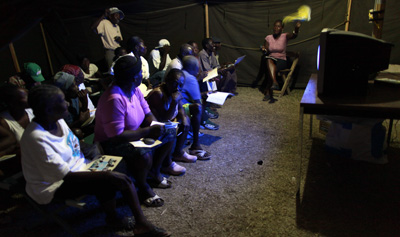
These two main state-owned media outlets withstood the earthquake that heavily devastated the country’s broadcast and print media outlets. Their premises were only slightly damaged and their buildings survived. Their equipment is still functional and their journalists are unharmed. Even so, the state-owned outlets took about two weeks to get back on the air. The days of prayer allowed the two stations to visibly surface in a community deeply disoriented.
Decades of political instability in Haiti have seriously affected the operation of state-owned media outlets. They have been used as propaganda tools by the various dictatorial regimes that have led the country since the Duvalier era. They have a very small audience and the population relies more on private media outlets for credible news. Contacted by CPJ, a member of the editorial staff of Haiti’s National Television (TNH), who spoke on condition of anonymity, said that state-owned media outlets are entirely politically oriented, even after the earthquake.
The state outlets have extensive broadcasting coverage. The two reach about 60 percent of the nation. The National Television station is the only TV station based in Port-au-Prince, the capital, which reaches a provincial city. As for the National Radio station, it has a network of local correspondents across the country. Besides local news reports, the TV station only broadcasts video clips and television series from abroad.
The Haitian government also owns a monthly called Le Monitor that only publishes government-related issues.
Editor’s Note: If you have any information on journalists and media outlets in Haitiplease post a comment below or notify us via e-mail [email protected], or Twitter: @HelpJournalists. We are collecting funds that will go directly to Haitian journalists. If you’d like to make a contribution, please click this link and enter “Haiti” in the “Notes” section on the second page.
